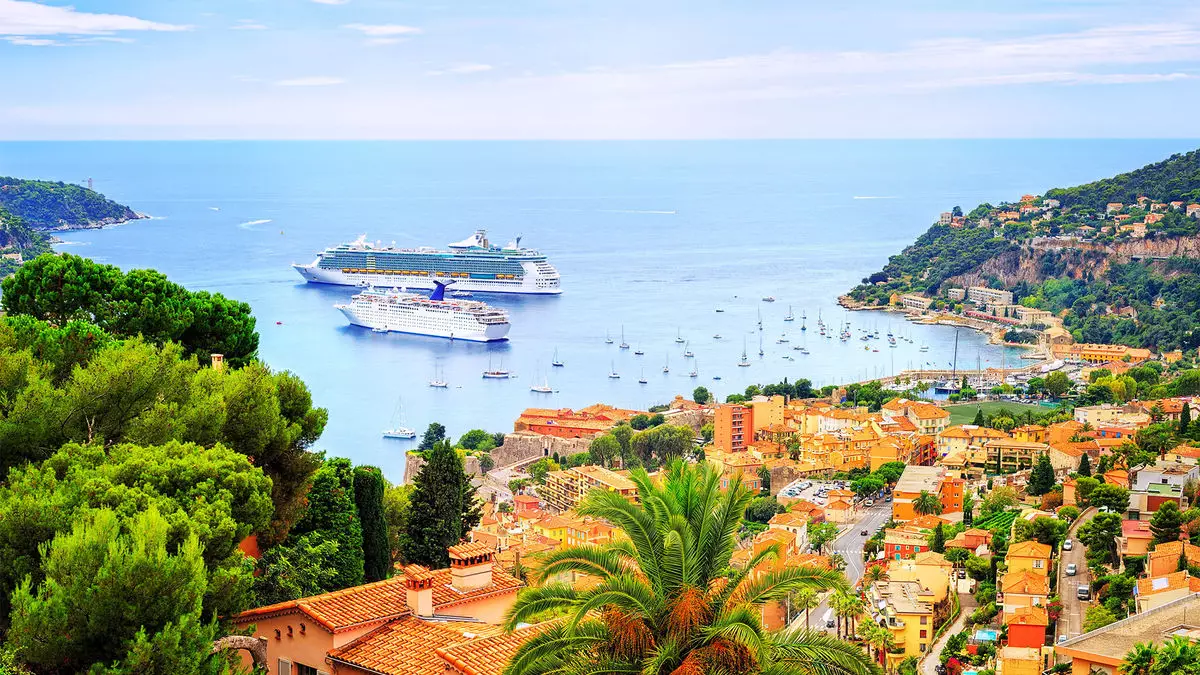The tourism landscape is increasingly defined by a complex interplay of economic growth and environmental considerations. In the picturesque Nice-Côte d’Azur region of France, a looming conflict has emerged as the Cruise Lines International Association (CLIA) grapples with a new legislative effort to limit the access of large cruise ships. The new decree, signed by Nice’s Mayor Christian Estrosi, seeks to ban ships accommodating over 900 passengers from docking in Nice and Villefranche-sur-Mer starting July 1. The rationale behind this decision hinges on issues of overtourism and environmental sustainability—concerns that resonate across many European destinations facing similar dilemmas.
The cruise shipping industry finds itself on the defensive, advocating for a more comprehensive tourism management approach rather than outright bans, which they argue can stifle economic opportunities for local communities. Samuel Maubanc, CLIA’s director general for Europe, has voiced strong opposition to what they perceive as a blanket restriction. He suggests that managing tourism through constructive dialogue and collaborative frameworks has proven effective in allowing both residents and tourists to coexist harmoniously.
Mayor Estrosi has been candid in expressing the motivations behind the decree. He emphasized the need to manage the “low-cost clientele” that large cruising vessels often bring, stating that they contribute to environmental degradation and local congestion while leaving minimal economic benefit in their wake. In his New Year’s address, he made it clear that the negative externalities associated with large tourist groups are untenable for local communities striving for quality in their tourist experiences.
The anticipated economic ramifications of this ban are profound. According to local maritime organizations, the decree could lead to a staggering loss of over $10 million for Nice and an overall figure exceeding $600 million for the broader region. This underscores a core tenet in the debate over sustainable tourism: how to strike an equitable balance between protecting local ecosystems and ensuring that residents benefit from tourism-related revenues.
This regulatory push isn’t isolated to Nice and Villefranche-sur-Mer; it reflects a growing trend among renowned tourist destinations in Europe, including Venice and Barcelona, which have also implemented restrictions to curb the negative impacts of excessive tourism. The share of bookings from cruise ships has ballooned over the years, leading to significant strain on infrastructure and local resources.
Estrosi’s decree represents only the latest chapter in this geographical saga, yet it brings forth vital questions about the viability of large-scale tourism in areas ill-equipped to handle it. Communities are beginning to reassess whether they can sustainably welcome the influx of visitors without compromising their cultural identity, environmental health, and overall quality of life.
In light of these new regulations, the cruise industry is already contemplating adaptations. Notably, smaller vessels could see increased demand as traditional cruise lines reassess their itineraries. Oceanic Cruises’ president, Frank A. Del Rio, pointed out the myriad alternatives that the Mediterranean offers, indicating that this shift might prompt a significant transformation in consumer behavior and industry operations. While major lines like Royal Caribbean and Norwegian Cruise Line may find themselves at a disadvantage, smaller operators and unique travel experiences could become more appealing options.
This shift will require travel advisors to be more agile and proactive in managing their clients’ expectations. Jackie Friedman, president of Nexion Travel Group, emphasized the uncertainties introduced by last-minute itinerary changes and the potential effects on booking patterns. However, she also highlighted an emerging trend: travelers may increasingly seek smaller boats and alternative ports, driven by a desire for unique experiences that larger cruise lines can no longer provide.
The impending restrictions on cruise access to Nice-Côte d’Azur bring to the forefront the delicate balance that local governments must strike between safeguarding their environments and fostering economic development. The choice to embrace a holistic approach to tourism management over blunt regulations could pave the way for a more sustainable coexistence between visitors and residents.
For CLIA and similar organizations, the challenge lies not only in countering these restrictions but also in evolving their business models to accommodate a shifting landscape characterized by increased environmental awareness and changing consumer preferences. As the cruise industry contemplates its future direction, fostering a collaborative dialogue with local governments may prove to be the most effective means of fostering both economic vitality and ecological sustainability in these iconic tourist destinations.


Leave a Reply